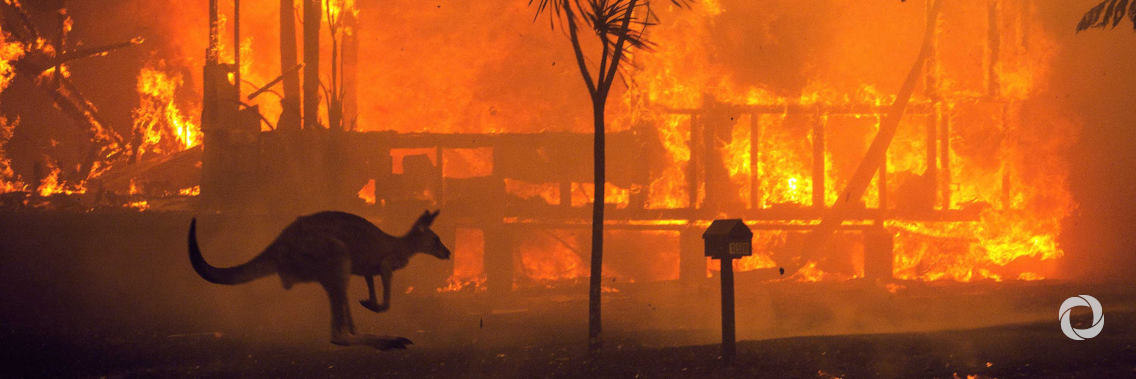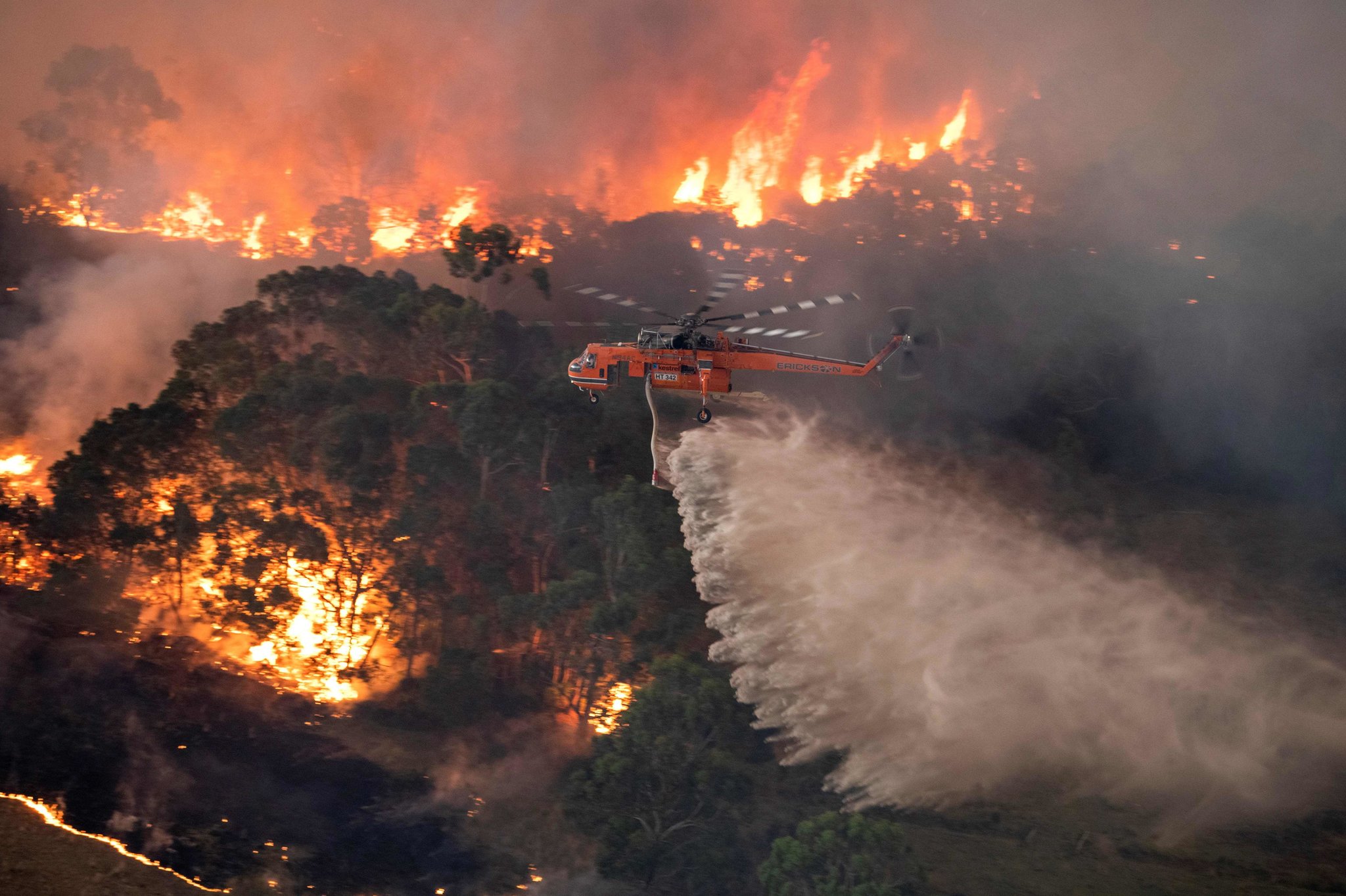As the fire stalked the east coast of Australia, the daytime sky turned inky black, then blood red. Emergency sirens wailed, followed by the thunder of gas explosions. Thousands of residents fled their homes and huddled near the shore. There was nowhere else to go.
Apocalyptic scenes like these in Mallacoota, a vacation destination between Sydney and Melbourne, came on the last day of the warmest decade on record in Australia.
The country is in the grip of a devastating fire season, with months of summer still to go, as record-breaking temperatures, strong winds, and prolonged drought have ignited huge blazes across the country. The government prepared to deploy navy vessels and military helicopters to help fight the fires and evacuate people.
The devastation is immense. In the state of New South Wales, which includes Sydney, more than 900 homes have been destroyed and nine million acres have burned since November. Almost 100 fires were still raging in the state on Tuesday, with about three dozen more across the border in Victoria.
Australia is normally hot and dry in summer, but climate change, which brings more frequent and longer periods of extreme heat, worsens these conditions and makes vegetation drier and more likely to burn. The country recently concluded its driest spring on record. That was followed in mid-December by the hottest day on record, with average highs across the country of 41.9 degrees Celsius (107.4 degrees Fahrenheit).

Polls show a large majority of Australians view climate change as an urgent threat and want stronger government action to combat it. The catastrophic fire conditions have put an intense focus on the Australian government’s failure to reduce emissions of carbon dioxide, which traps heat when released into the atmosphere and contributes to global warming.
Prime Minister Scott Morrison, a conservative, has made it clear that Australia’s economic prosperity comes first. Even as his country burned, he has said repeatedly that it is not the time to discuss climate policy.
“We have stood up to these terrible disasters before, and we have come through the other side,” he said in his New Year’s Eve address. “We will rebuild and we will stay strong.”
As Australia has seen a surge of climate activism in recent months, Mr. Morrison has gone so far as to suggest that the government should outlaw efforts by environmental groups to pressure businesses with rallies and boycotts. Other members of Mr. Morrison’s government have answered calls for action with insults; the deputy prime minister called people who care about global warming “raving inner-city lunatics.”
In Mallacoota, where several homes were destroyed, residents in boats shared footage of themselves wearing masks and life vests as they waited under the blazing red sky. Others opted to stay and defend homes, likening burning trees to “exploding infernos” and describing the roar of the blazes.

In Batemans Bay, four hours north, residents sat on folding chairs along the beach, life rafts at the ready, as a fire encircled the town and burned homes.
The fires have been so fierce that they have created their own weather systems.
Original source: The New York Times
Published on 31 December 2019


